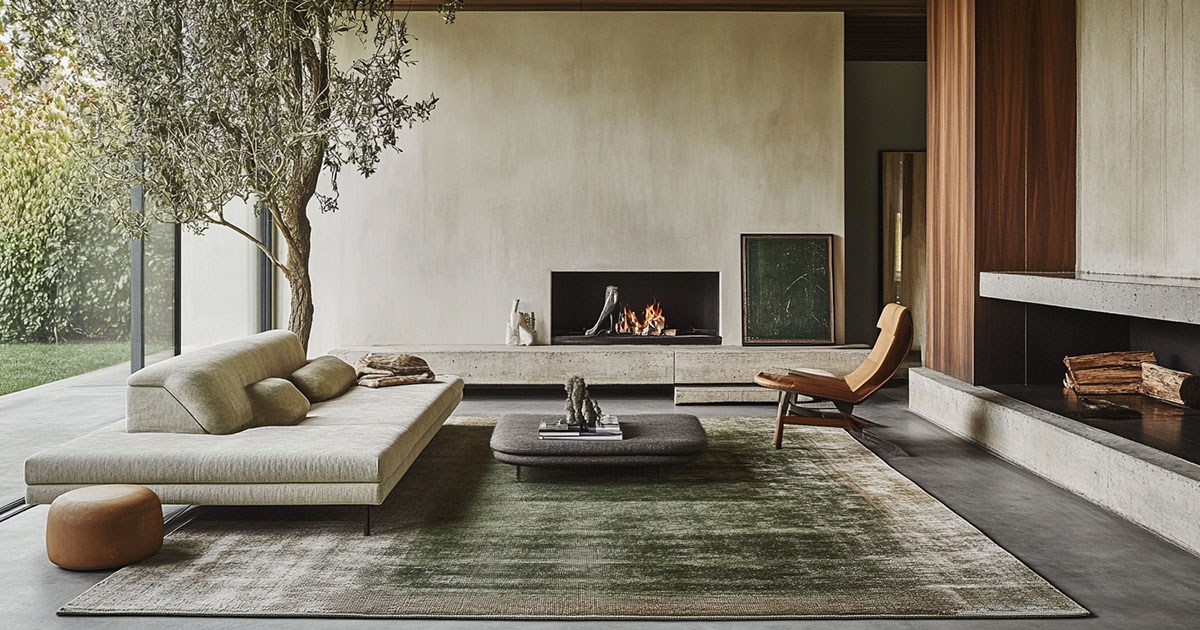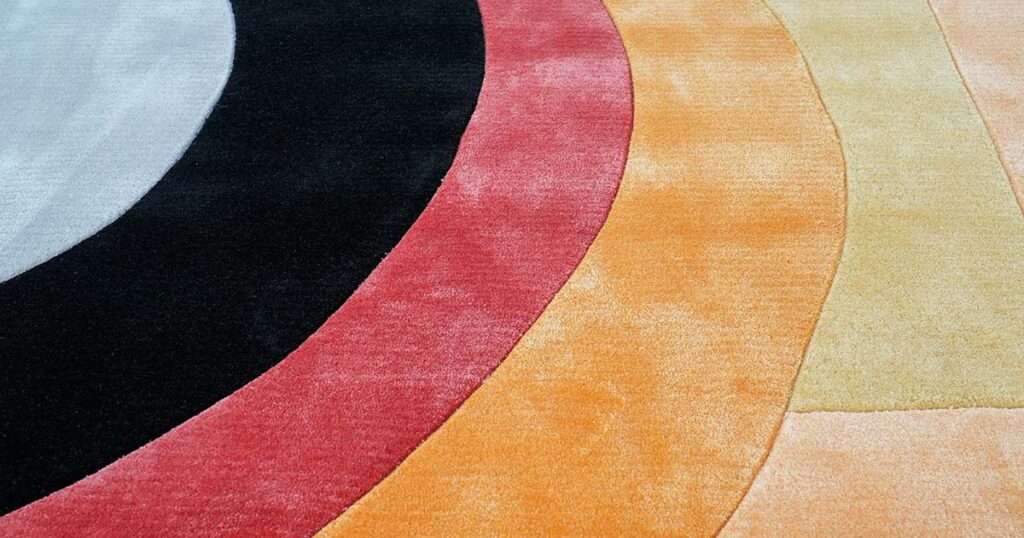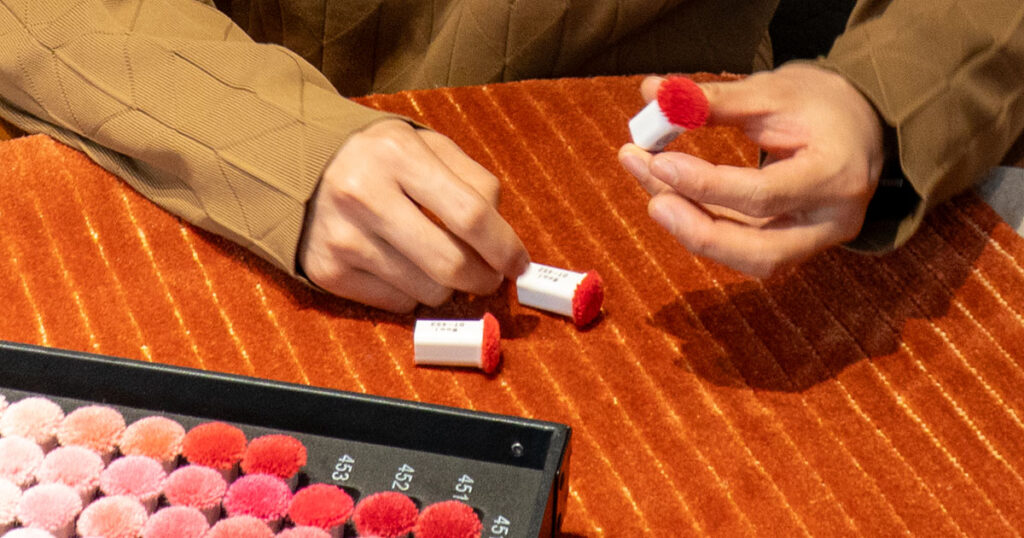When it comes to creating a unified, sophisticated interior space, few design elements can match the impact of a monochromatic tufted rug.
These single-color statement pieces have gained popularity in both commercial and residential settings.
They can transform environments while providing versatility and timeless appeal.
What Makes Monochromatic Rugs Special?
Monochromatic doesn’t mean boring. A monochromatic scheme uses variations of a single color throughout a space, creating a cohesive and modern environment. The consistency of color produces harmony unlike any other design approach.
In a monochromatic interior, rugs play a pivotal role. As large visual elements covering the floor, they unite disparate parts of a room and anchor the color scheme.
A well-chosen monochromatic rug adds depth, texture, and warmth without introducing new colors, enhancing the design’s cohesion.
The Power of One Color
Why choose a monochromatic rug? The benefits are numerous:
- Unified Elegance: Creates a seamless, sophisticated look that feels intentionally designed
- Enhanced Perception of Space: Minimizes visual chopping and can make rooms appear larger
- Timeless Quality: Less likely to go out of style than trendy multi-color schemes
- Emphasis on Texture and Form: Without multiple colors competing for attention, the eye appreciates subtle design elements
Transform Commercial Spaces
Offices and Workspaces
Modern workplaces use monochromatic rugs to cultivate specific atmospheres. In tech startups and creative agencies, you might find bold branded color schemes extending from walls to floors. A rug in the company’s signature color reinforces brand identity and creates an immersive work environment.
In corporate settings, neutral monochrome schemes (grays, whites, or beiges) offer professionalism and versatility. A large gray area rug in a conference room can unite mixed-tone gray walls and chairs, making the space feel larger and more cohesive.
The practical benefits are significant too. Monochromatic rugs in collaborative areas help with acoustics (crucial in open-plan tech hubs or marble-floored corporate lobbies) and comfort, which can boost productivity.
Retail Environments
Retail spaces leverage monochromatic design in two distinct ways:
First, many retailers opt for neutral monochromatic interiors so products stand out. A high-end fashion boutique might use an off-white wool rug that allows colorful merchandise to become the visual focal point against an elegant, unified backdrop.
Alternatively, some stores use a single, bold color to create a memorable brand impression. Picture a store with walls, ceiling, cabinetry, and rugs all in the same earth-tone orange. This approach “sets the vibe” and makes the space instantly recognizable to customers.
In both strategies, the monochromatic rug helps create an immersive shopping experience that either highlights products or reinforces brand identity.
Hospitality Spaces
Hotels, restaurants, and lounges are ideal settings for monochromatic rugs. These spaces aim to evoke emotion and leave lasting impressions, goals well-served by the unity of a monochromatic scheme.
Hotel lobbies often set the tone for the guest experience. Imagine a boutique hotel lobby done entirely in emerald green, with a custom green rug covering a large portion of the floor. Every step a guest takes reinforces that immersive color experience.
Restaurants use monochromatic schemes to stimulate appetite or convey theme. A coastal-themed restaurant might feature a monochromatic blue interior, including a blue-patterned rug that evokes ocean waves. Meanwhile, an upscale steakhouse might opt for deep browns and cognac tones for warmth and intimacy.
Yarns, Textures, and Patterns
When selecting a rug for a monochromatic interior, material and design considerations become especially important:
Yarn Types
For luxurious, high-end looks, wool, silk, or viscose rugs in monochromatic designs shine. Wool takes dye beautifully, has a soft feel, and offers natural resilience. Silk (or bamboo silk for a more affordable alternative) adds sheen – a monochromatic silk rug will reflect light and almost change color depending on viewing angle.
For high-traffic or budget-conscious projects, synthetic fibers like nylon or polypropylene work well. They can be solution-dyed in any color and offer excellent durability and stain resistance.
Natural fibers such as sisal, jute, or seagrass typically come in neutral tones and add organic texture. Using a sisal rug in a monochromatic scheme adds an earthy layer that’s perfect for biophilic design trends.
The Crucial Role of Texture
Texture is king in monochromatic rug selection. Without multiple colors creating pattern contrast, the rug’s surface interest comes from its construction:
- High-pile or shaggy rugs in one color feel luxurious and can soften a modern monochromatic room
- Low-pile or flatweave rugs emphasize sleekness and showcase subtle patterns crisply
- Cut-and-loop pile techniques allow tone-on-tone patterns visible through light reflection
- Hand-carving creates sculptural effects that are entirely tone-on-tone
Pattern Possibilities Within One Color
While avoiding bold multicolor patterns in a monochromatic design, there are plenty of pattern options within a single-color framework:
A solid rug (completely uniform color) is straightforward, but you can introduce subtle interest with tone-on-tone patterns. A gray monochromatic rug could have a lighter gray trellis pattern woven into it, or a navy rug could feature a velvety damask design sculpted in a slightly different shade.
Geometric patterns especially lend themselves to monochrome treatment – a large-scale geometric shape in cut-pile on a loop-pile background appears modern and striking while remaining one color.
For classic settings, consider a rug with a traditional motif (like a Greek key border or floral vine) executed in a self-color pattern. This approach complements classic furniture or architecture without introducing busy palettes.
Balancing Rugs with Interior Elements
Achieving a successful monochromatic design requires considering how the rug interacts with flooring, furniture, and lighting:
Contrast Within Cohesion
Even in a monochromatic scheme, subtle contrast adds interest. Your rug and the floor should not be exactly the same in every attribute. On a pale gray tile floor, use a slightly deeper gray rug or a pale gray rug with more texture to create distinction while maintaining the color story.
Coordinating with Furniture
If your sofa and rug are the same color, differentiate them by texture or pattern. A velvet teal sofa on a chunky woven wool teal rug gives textural contrast (smooth vs. nubby) that maintains the all-teal look while adding definition.
Consider using furniture with metallic or wood finishes as subtle accents in a monochromatic room. Polished chrome legs on chairs in an all-gray scheme add shine without disrupting the palette.
The Impact of Lighting
Different types of lighting will affect how the rug’s color appears. Sunlight hitting a textured monochromatic rug creates shadows that appear as darker tones of the same color, enriching the look.
Test your rug sample under the planned lighting. Warm lighting casts a warm tint; a gray rug might look slightly beige under very warm lights.
Accent lighting can highlight the rug’s texture or pattern. In a monochromatic art gallery lobby, hidden lights grazing the floor can make a carpet’s tone-on-tone pattern more pronounced.
Regional Preferences and Cultural Influences
Design preferences for monochromatic interiors vary worldwide, influenced by cultural aesthetics, climate, and historical context:
In North America, designers often seek balance between timeless and trendy. Commercial projects frequently utilize neutral tones (grays, whites, beiges) for broad appeal.
However, in creative hubs like New York or tech centers like Silicon Valley, you’ll find punchier monochromatic statements, with spaces decked in brand colors to energize workplaces.
European design shows deep appreciation for historical context. In Scandinavia, a monochromatic or low-contrast style dominates, with “neutral, monochromatic colors like whites and grays, often accented by natural wood.” Long, dark winters have led designers to favor light schemes that maximize brightness.
The Middle East has a rich design heritage of vibrant colors and intricate patterns. Modern monochromatic interiors often signal contemporary sophistication while incorporating cultural elements subtly. A hotel in Oman might use traditional jewelry patterns as an oversized tone-on-tone design in the lobby carpet – beige from afar, but with cultural storytelling elements visible up close.
Blending Modern Design with Classic Style
Monochromatic rugs provide common ground between modern and classic design elements:
Traditional rug patterns (Persian, Turkish, etc.) translated into a monochromatic version feel sleek and updated while retaining heritage motifs. A classic damask pattern in all-navy suddenly feels contemporary.
A monochromatic rug can also serve as a canvas for antiques. A simple solid-color rug with subtle texture grounds period furniture without competing for attention. The rug ties into the overall color story so the room feels cohesive despite mixing eras.
Architectural classicism can be modernized through monochrome. Painting wainscoting, crown molding, and walls all in one shade simplifies traditional rooms. A monochromatic rug in a matching or slightly contrasting shade maintains this unified approach.
Some colors themselves evoke classic decor – deep burgundy, royal blue, forest green. Using these colors monochromatically can suggest traditional luxury in a contemporary way. A monochromatic burgundy hotel bar might recall old gentlemen’s clubs but feel current with sleek surfaces and a solid burgundy rug.
Practical Considerations for Your Space
When choosing a monochromatic rug, consider these practical aspects:
In high-traffic commercial areas, durability is key. Solid-color rugs can be forgiving if they have heathering or mixed yarn textures that hide dirt. Dark monochrome rugs (navy, charcoal) hide spills better than light ones, so consider the function of your space when selecting the rug color.
For size and placement, avoid choosing a rug that’s too small, which can break the monochromatic flow. A larger rug means more continuous color, enhancing cohesion. If using multiple rugs, ensure they’re the same color or very close to maintain the color story throughout the space.
The layering technique can work beautifully in monochromatic schemes. Place a smaller accent rug with a subtle tone-on-tone pattern on a larger solid rug. As long as they’re the same hue, this adds texture and can delineate subzones while maintaining the unified palette.
Why Choose Monochromatic Now?
Monochromatic rugs are trending globally for good reason:
- They offer flexibility – they can be integrated into various design styles from minimalist to traditional
- They create impact without overwhelming – a statement through cohesion rather than contrast
- They stand the test of time – less likely to feel dated than busier patterns
- They emphasize quality – when color isn’t the main differentiator, craftsmanship and texture shine
Whether you’re designing a corporate headquarters, a boutique hotel, or a residential space, a monochromatic tufted rug can be the foundation of a sophisticated, cohesive interior.
By focusing on texture, subtle pattern variation, and perfect coordination with your space’s palette, you’ll create an environment that feels both striking and harmonious.
Ready to Transform Your Space?
Would you like to explore custom monochromatic tufted rugs for your next project? Contact us today to discuss how we can create the perfect foundation for your design vision.
From selecting the ideal fiber to determining the perfect texture and tone, our experts will guide you through creating a monochromatic masterpiece that elevates your entire space.




